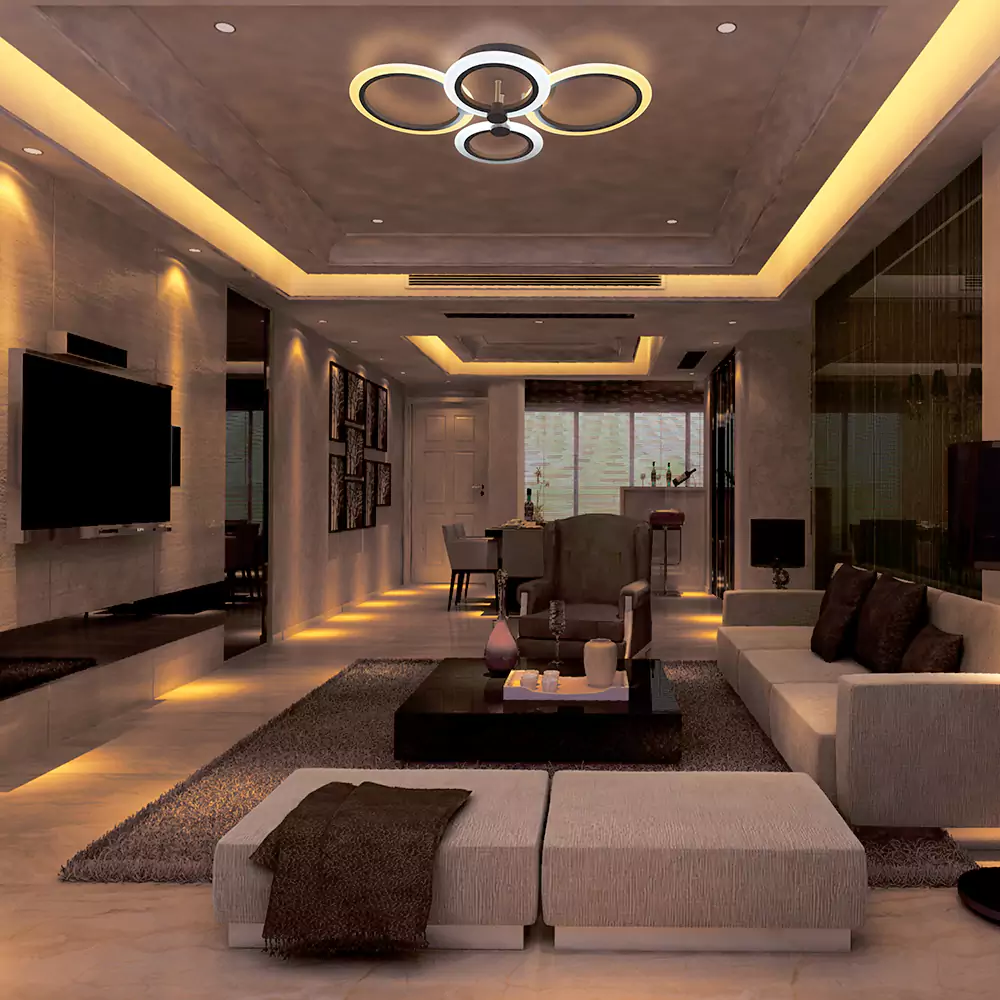Lighting in interior design has a profound impact on people’s mental state and performance. Using natural light, improving the appearance of a space, and creating a sense of calm are some of the benefits of proper lighting. Lighting can also increase focus and reduce fatigue.
The Importance of Lighting in Interior Design
Lighting is very important in interior design because it can significantly affect the look and feel of a space. Here are a few of the important things about lighting in interior design:
1. Psychological impact
Lighting can affect a person’s mental state. The right lighting can create a sense of calm, freshness, or even energy in people.
2. Enhance visual beauty
Proper lighting can enhance the beauty of interior decoration elements. Using different lights, architectural and decorative details can be highlighted.
3. Defining spaces
Lighting can help define and separate spaces in an environment. For example, using soft, warm lights in the living room to create a sense of intimacy and brighter lights in the kitchen to increase visibility and efficiency.
4. Increasing performance
Proper lighting can help increase people’s performance. The right lighting for studying, working, or cooking can help you be more productive.
5. Create different moods and feelings
Lighting can create different moods and feelings in a space. For example, soft, warm lighting for a comfortable and relaxing environment or cool, bright lighting for an efficient and dynamic environment.
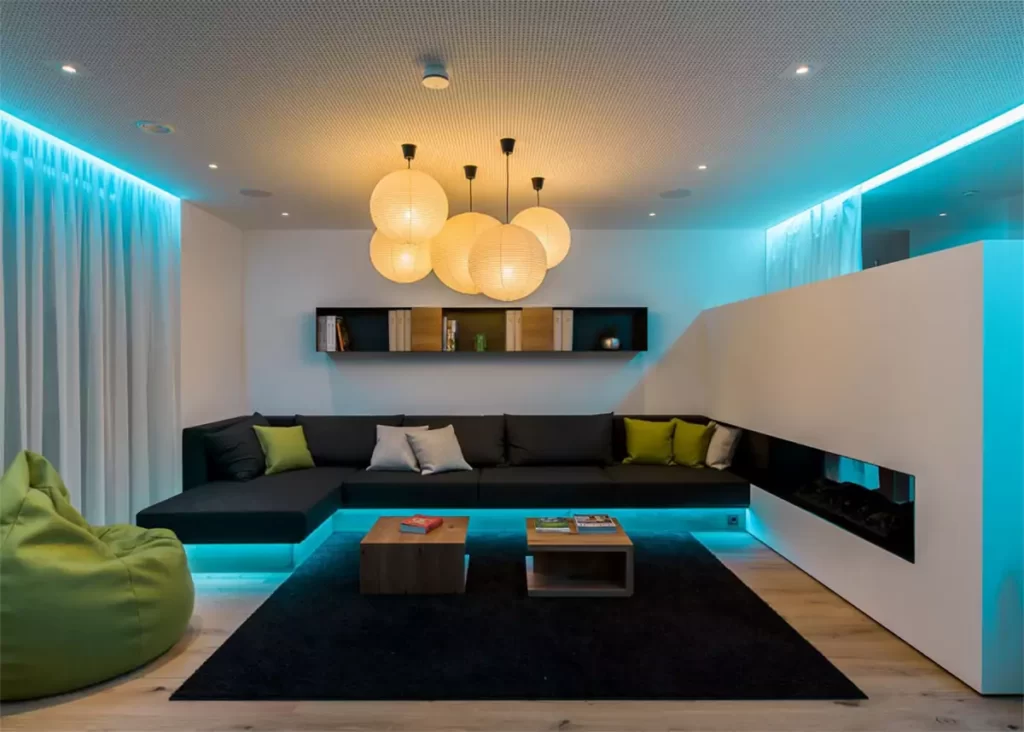
Lighting Methods in Interior Design
Lighting methods in interior design include various techniques and principles that help improve the appearance and functionality of interior spaces. Here are several main lighting methods:
1. Ambient Lighting
General or ambient lighting is the main light in a space that is used to illuminate the entire space. This type of lighting is often provided by overhead light sources such as ceiling lights, recessed lights, chandeliers, and pendants. The goal of ambient lighting is to create uniform illumination throughout the space.
2. Task Lighting
Task lighting is focused light used to perform specific activities such as reading, writing, working on a computer, or cooking. Task light sources include table lamps, under-cabinet lights, study lights, and kitchen lights.
3. Accent Lighting
Accent lighting is used to highlight and emphasize specific elements of interior decoration, such as artwork, plants, sculptures, or feature walls. This type of lighting is usually done using spotlights, halogen lights, and recessed lights. The purpose of accent lighting is to create focal points and draw attention to important details.
4. Decorative Lighting
Decorative lighting refers to lighting that, in addition to lighting, has a decorative and beautifying aspect. Pendant lights, beautiful chandeliers, sconces, and special lamps are among the decorative light sources. This type of lighting can help make the space more attractive and beautiful.
5. Hidden Lighting
Hidden or hidden lighting is done using light sources that are not directly visible. This type of lighting is usually installed in false ceilings, behind furniture or under cabinets and creates an indirect and soft light. Concealed lighting can help create a sense of warmth and intimacy in the space.
6. Natural Lighting
Using natural sunlight is one of the best lighting methods in interior decoration. Large windows, skylights and glass doors help bring natural light into the space. Using adjustable curtains and blinds can control the amount of natural light.
Important points in lighting:
- Light balance: A combination of lighting types is important to create balance and harmony in the space.
- Light control: Using dimmers (light intensity regulators) and smart lighting systems can help better regulate and control the light in the space.
- Light color: Choosing the right color temperature (cool or warm) for different types of spaces can have different effects on people’s feelings.
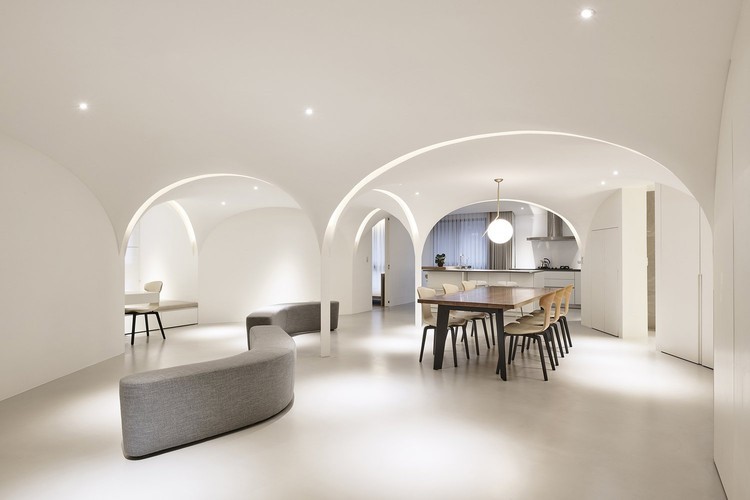
Types of Light Sources Suitable for Interior Lighting
In interior lighting, using the right light sources can have a significant impact on the appearance and function of spaces. By combining different light sources, you can achieve the desired lighting that suits your needs and brighten and beautify your interior in the best possible way. Below, we will mention the different types of light sources suitable for lighting in interior design:
1. Ceiling Lights
- Chandeliers: For general lighting and beautifying large spaces such as living rooms or reception rooms.
- Recessed Lights: To create uniform and stylish general lighting on the ceiling.
2. Wall Lights
- Wall Sconces: To provide accent and decorative light on walls, usually in hallways and smaller spaces.
- Sconces: To create accent and decorative light in specific areas of the space.
3. Table Lamps
- Study Lamps: Suitable for providing task lighting at the desk and study.
- Decorative Lamps: To create beauty and soft light in rooms.
4. Floor Lamps
- Classic Floor Lamps: For general and decorative lighting in corners and dark spots of the room.
- Adjustable Floor Lamps: For task and accent lighting, with adjustable angle and height.
5. Linear Lights
- Under Cabinet Lights: Suitable for task lighting in kitchens and workshops.
- Recessed Lights: For hidden lighting and creating special effects on ceilings and walls.
6. LED Lamps
- LED Strip Lights: For hidden and decorative lighting under shelves, behind TVs and under furniture.
- Smart LED bulbs: With color-changing and remote control capabilities to create different lighting modes.
7. Pendant Lights
- Modern pendant lights: For lighting and beautifying specific spaces such as dining tables and kitchens.
- Industrial pendant lights: For creating a different, industrial look in your decor.
8. Natural light
- Windows and skylights: Use natural sunlight to brighten and create a better feel in the space.
- Curtains and blinds: To control the amount of natural light entering the space.
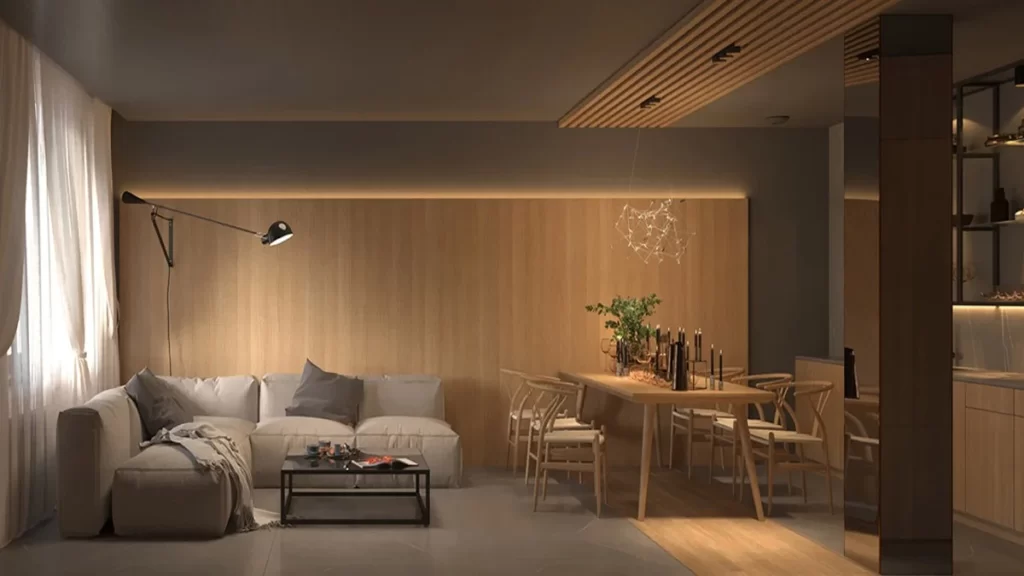
Important points in choosing light sources
- Coordination with decoration: Light sources should be in harmony with the interior decoration style.
- Energy consumption: Choose energy-efficient light sources such as LED lamps to reduce energy consumption.
- Ability to adjust light intensity: Use dimmers to adjust light intensity according to different activities and moods.
The effect of lighting on the interior decoration of the living room and dining room:
Lighting plays a very important role in the interior decoration of the living room and dining room and can have a significant impact on the appearance, feel, and mood of the space. Below, we will examine some of the important effects of lighting in these spaces:
1. Creating atmosphere and space
Lighting can help create a pleasant and inviting atmosphere in the living room and dining room. Using soft, warm lights can create a calm and friendly atmosphere, while cool, bright lights contribute more to a modern and energetic space.
2. Emphasis on key points
Using accent lights to draw attention to specific points such as artwork, vases, and decorative objects can help highlight the beauty of the decoration. Using adjustable lights to display these elements more prominently is very effective.
3. Function and efficiency
Adequate and appropriate lighting helps improve the efficiency of the space. In the living room, having enough light for reading, watching TV, and other activities is very important. Also, using dimmers to adjust the brightness can help adapt the light to different activities.
4. Increase dimensions
Proper lighting can help increase the sense of dimensions in the space. Using mirrors, ceiling lighting, and walls can make the room appear larger and more open.
5. Aesthetics
Proper lighting can best display all elements of the decoration, from sofas and rugs to wall paintings and decorative accessories. A combination of ambient, task, and accent lighting helps create harmony and balance between all components of the decoration.
6. Feeling of peace
Proper lighting using soft and indirect lights can bring a sense of peace and comfort to the space. Using warm, adjustable lights along with candles and table lamps can create a pleasant and calm environment for relaxation and meetings.
7. Energy Efficiency
Using energy-efficient light bulbs like LEDs can help reduce energy consumption and electricity costs. Also, using motion sensors for ambient lights can make energy consumption more efficient.
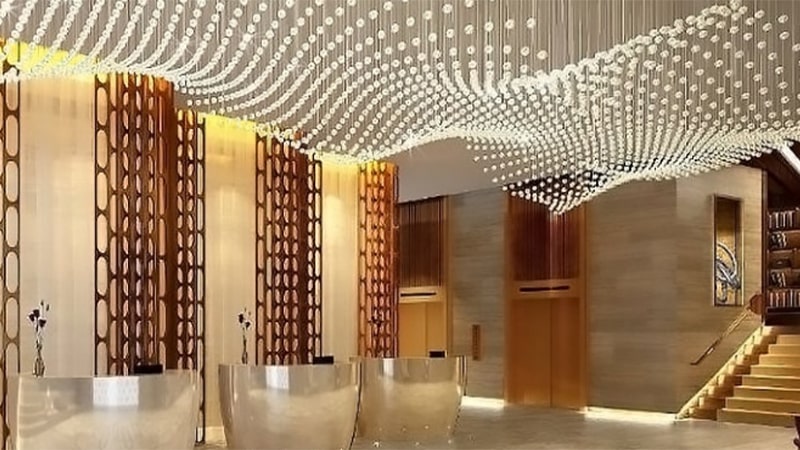

 English
English العربية
العربية